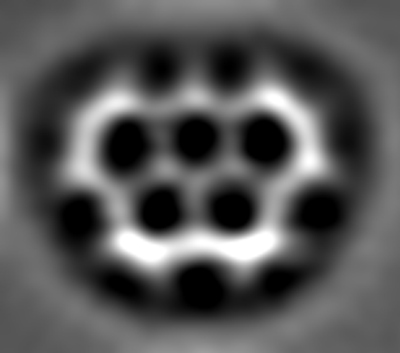Scientists at IBM have imaged a single 1.2 nm-wide olympicene molecule using advanced noncontact atomic force microscopy technique.

Olympicene. Credits IBM Research - Zurich, University of Warwick, Royal Society of Chemistry
The researchers claim the image to be the smallest possible five-ringed structure that has been created and imaged.
The University of Warwick, the Royal Society of Chemistry (RSC), and IBM Research – Zurich have collaborated to achieve this feat. They used advanced imaging techniques and intelligent synthetic chemistry.
The five-ringed structure of olympicene had earlier been entered in RSC’s free online chemical database, ChemSpider, which contains millions of records. Olympicene is a compound related to graphene and may have special optical and electronic properties. They may be used in LEDs and solar cells.
Dr David Fox and Anish Mistry, Chemists at the University of Warwick, utilized smart synthetic organic chemistry and built the olympicene molecule. Synthetic organic chemistry is considered to be the toolbox for the modern molecule designer.
The researchers Ben Moreton and Dr Giovanni Costantini at the University of Warwick used scanning tunnelling microscopy to obtain an image of olympicene’s molecular structure. Scientists at the Physics of Nanoscale Systems Group at IBM Research – Zurich used noncontact atomic force microscopy and analyzed olympicene’s structure which was 100,000 times thinner than a single human hair.
The journal Science had earlier published the technique. The ChemSpider Synthetic Pages contains the chemical formula required for producing olympicene and other molecules.
Disclaimer: The views expressed here are those of the author expressed in their private capacity and do not necessarily represent the views of AZoM.com Limited T/A AZoNetwork the owner and operator of this website. This disclaimer forms part of the Terms and conditions of use of this website.